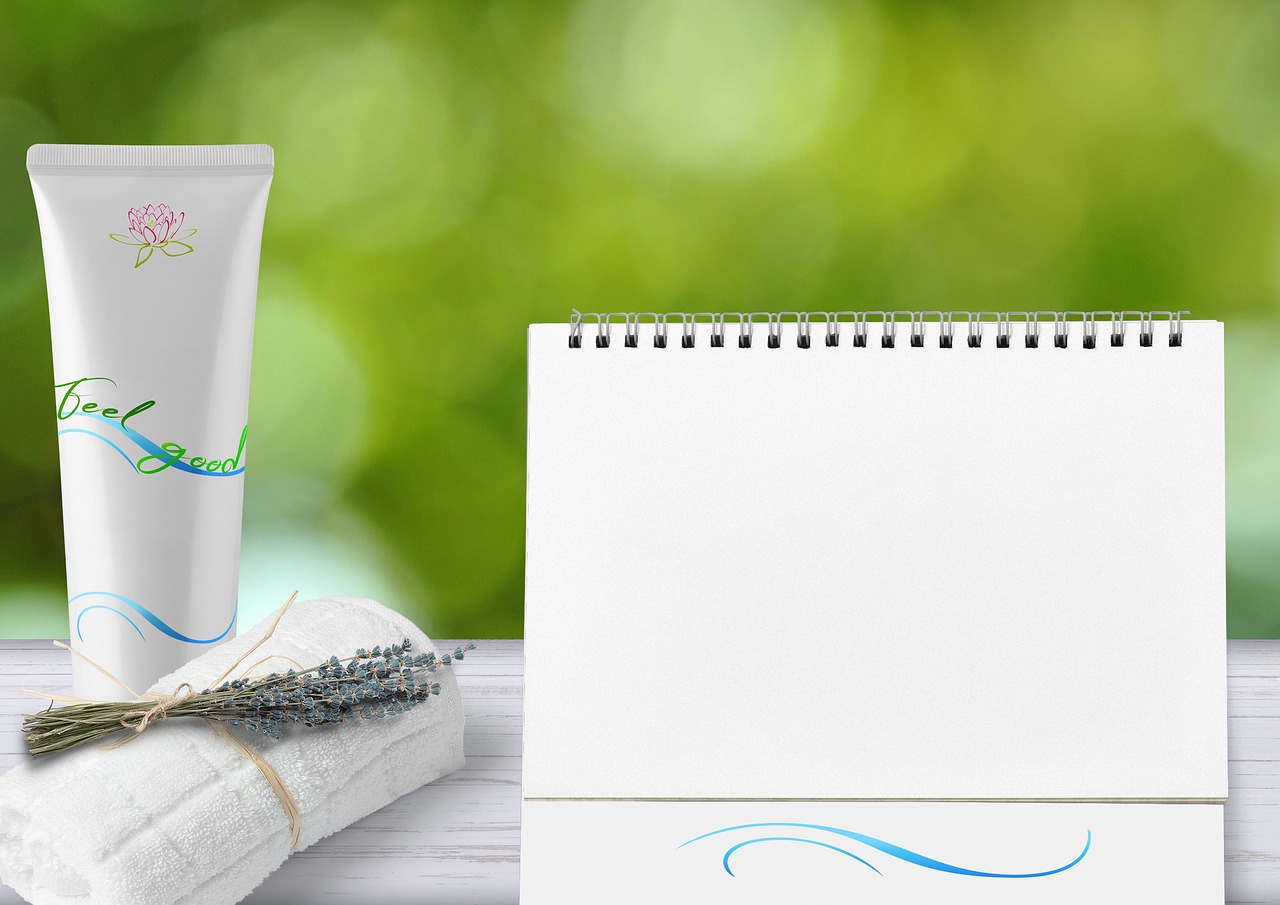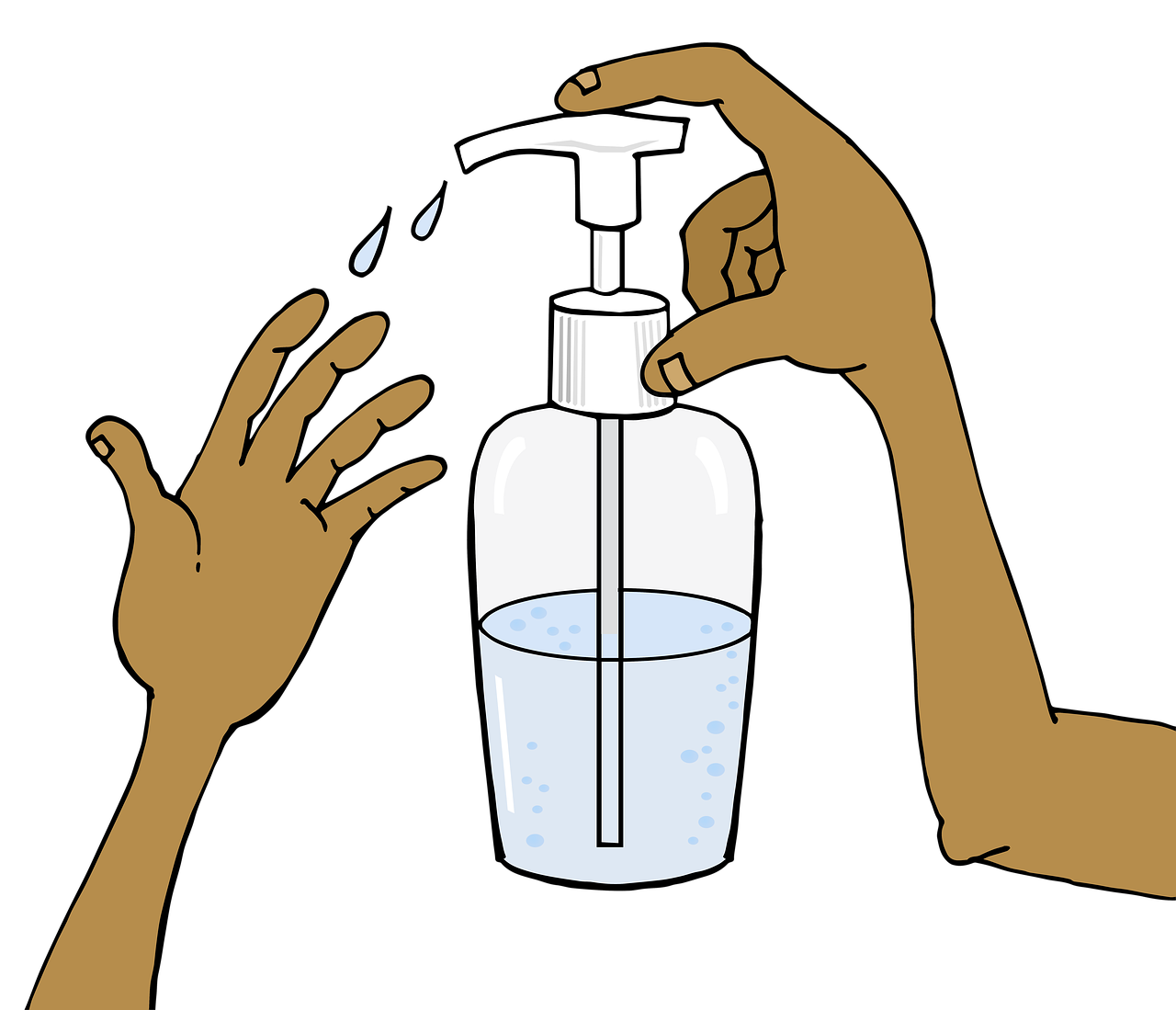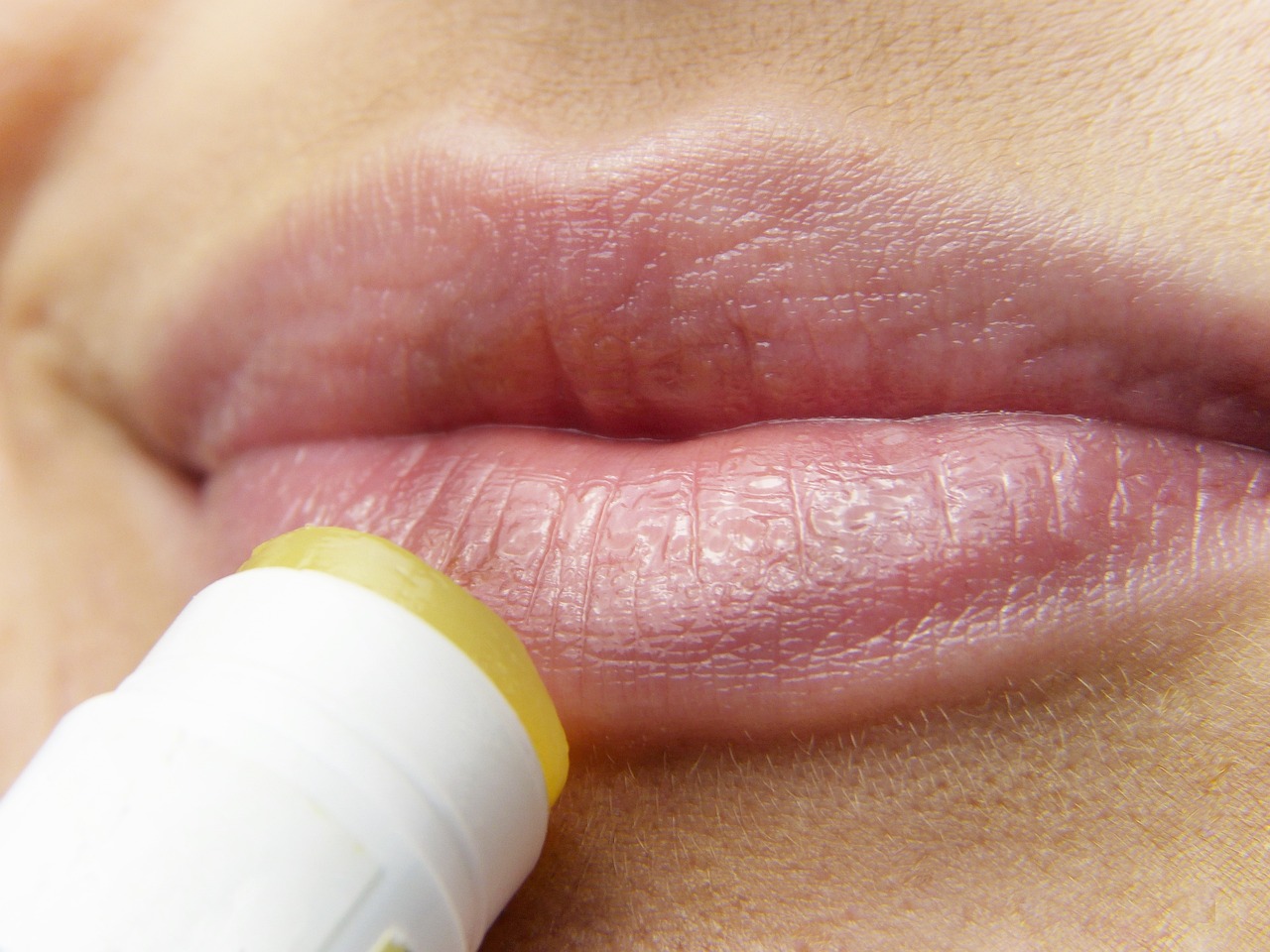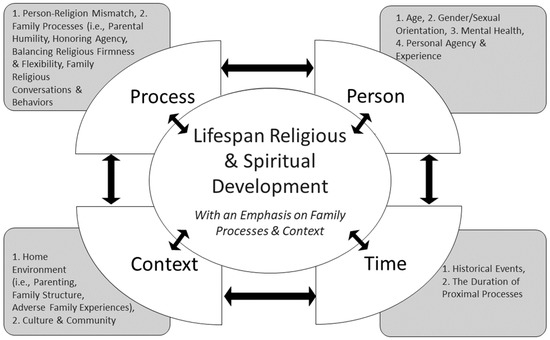Table of Contents
- Asia: Rituals of Purification
- India
- Japan
- Middle East: The Art of Aromatics
- Islamic Traditions
- Africa: The Significance of Scarification
- Body Adornments
- South America: Herbal Wisdom
- Amazon Rainforest
- North America: The Modern Approach
- Handwashing
- Cosmetic and Grooming Products
- Global Impact of Globalization
- Access to Western Products
- Environmental Concerns
Personal hygiene is a universal concept, but its interpretation and practices vary significantly across different cultures and regions of the world. Understanding these diverse cultural perspectives on personal hygiene offers insights into the values, traditions and beliefs of various societies. In this article, we embark on a journey to explore how personal hygiene practices are perceived and practiced in different parts of the globe.
Personal hygiene is a universal concept, but its interpretation and practices vary significantly across different cultures and regions of the world. Understanding these diverse cultural perspectives on personal hygiene offers insights into the values, traditions and beliefs of various societies. In this article, we embark on a journey to explore how personal hygiene practices are perceived and practiced in different parts of the globe, shedding light on the rich tapestry of human customs and rituals that underscore the importance of cleanliness and well-being in our global community.
The Japanese Ritual of Bathing: In Japan, bathing is not merely a means to cleanse the body; it’s a deeply ingrained cultural ritual known as “onsen.” Japanese people often take communal baths, emphasizing the importance of relaxation and purification. These baths symbolize not only physical cleanliness but also spiritual renewal and harmony with nature.
Indian Practices of Ablution: India’s diverse cultural landscape brings a wide range of personal hygiene practices. Many Indians practice a morning ablution ritual known as “snaan.” This involves cleansing the body and soul by immersing in sacred rivers or simply taking a traditional shower. It’s a spiritual experience that transcends the physical act of cleaning.
Maori Traditional Tattoo Artistry: In New Zealand, the Maori people have a longstanding tradition of body art or “ta moko.” While this might not seem like a hygiene practice at first glance, it signifies a form of self-expression and identity that plays a significant cultural role. The intricate designs often tell stories of the individual’s heritage and experiences.
Hammams in the Arab World: In many Arab countries, hammams (public bathhouses) have been a focal point of hygiene and social interaction for centuries. Hammam rituals include exfoliation, steaming and massages, emphasizing the cleansing of both body and soul. These practices are deeply rooted in Islamic traditions of purification.
Indigenous Australian Healing Practices: Aboriginal communities in Australia have their own unique traditions of healing and cleansing, often involving natural remedies and traditional healing ceremonies. These practices are intertwined with a profound connection to the land and a holistic approach to well-being.
Tibetan Ablution Traditions: Tibetan culture places great emphasis on personal hygiene as a means of spiritual purification. Tibetan monks, in particular, engage in a daily practice of ritual ablution, which includes washing their hands, face and mouth as a form of mindfulness and preparation for meditation.
Western Beauty Rituals: In contrast, many Western societies prioritize grooming and beauty as part of personal hygiene. Cosmetic products and grooming practices are often seen as essential for self-presentation and confidence. This reflects a cultural emphasis on individualism and self-expression.
African Scarification: In various African cultures, scarification is a practice that involves creating decorative scars on the skin. While not a conventional form of hygiene, it is a deeply cultural and aesthetic practice that holds significance in rites of passage, tribal identity and self-expression.
Understanding these diverse perspectives on personal hygiene is not about judging one culture’s practices against another’s, but rather appreciating the richness of human diversity. These practices demonstrate how personal hygiene can be intertwined with cultural identity, spirituality and social connections. By exploring these varied traditions, we gain a deeper appreciation for the complex interplay of hygiene, culture and individual well-being in our global society.
Additionally, you can find further information on this topic by visiting this page: Introduction and Perspectives of Global Health | Springer Publishing
Asia: Rituals of Purification
In many Asian cultures, personal hygiene is deeply intertwined with spiritual and religious beliefs. For example:
In many Asian cultures, personal hygiene transcends mere physical cleanliness; it is a profound expression of spirituality and deeply rooted in religious beliefs. These practices not only promote physical well-being but also nurture a sense of inner harmony and connection to the divine. Here are a few examples of how personal hygiene is intertwined with spirituality and religion in Asian cultures:
1. Ritual Purification: In Hinduism, ritual purification plays a central role in daily life. The act of bathing, particularly in sacred rivers like the Ganges, is not just about cleansing the body but also purifying the soul. Devotees believe that the waters of these holy rivers have the power to wash away sins and grant spiritual blessings. Bathing rituals often accompany prayers and offerings to deities, creating a profound sense of spiritual connection.
2. Islamic Ablution (Wudu): In Islam, the practice of wudu (ablution) is a fundamental aspect of personal hygiene and worship. Before performing daily prayers, Muslims are required to cleanse specific parts of the body, including the hands, face, mouth and feet. This purification ritual not only prepares individuals for prayer but also symbolizes inner purity and submission to Allah. It underscores the idea that cleanliness is essential for spiritual closeness to God.
3. Buddhist Mindfulness: Buddhism emphasizes mindfulness in daily life, including personal hygiene practices. Mindfully brushing one’s teeth or washing one’s hands is seen as an opportunity for meditation and self-awareness. The act of cleansing is not just physical; it also symbolizes the purification of the mind and spirit. For Buddhists, maintaining cleanliness fosters mental clarity and a tranquil state of being.
4. Traditional Japanese Bathing: The Japanese have a deep reverence for water and bathing rituals. The traditional Japanese bath, known as “onsen” or “sento,” is not solely about physical cleansing but also a spiritual experience. It is a time for relaxation, reflection and rejuvenation. Bathing is seen as a way to purify the body and soul and it often involves a sense of gratitude for the gift of water and its cleansing properties.
5. Sikh Turban and Hair Care: Sikhs maintain long hair and wear turbans as a symbol of their faith and commitment to spiritual values. This practice includes careful hair care routines, such as washing and combing the hair and covering it with a turban. For Sikhs, hair represents a connection to the divine and a commitment to their religious identity.
These examples highlight the profound spiritual significance of personal hygiene practices in Asian cultures. They demonstrate how daily rituals of cleansing go beyond the physical and become opportunities for individuals to connect with their spirituality, uphold their religious beliefs and find inner peace and purity. Personal hygiene, in these cultures, is not just about looking clean; it’s about feeling spiritually refreshed and aligned with one’s faith.
Don’t stop here; you can continue your exploration by following this link for more details: Dirty and 40 days in the wilderness: Eliciting childbirth and postnatal …

India
In Hinduism, the act of daily purification through bathing is known as “Ablution.” It’s a crucial aspect of Hindu life, symbolizing the cleansing of the body and soul. Rivers like the Ganges hold immense significance for ritual bathing.
India: Ablution as a Spiritual Journey
In Hinduism, the act of daily purification through bathing, known as “Ablution” or “Snana,” transcends mere physical cleanliness. It is a sacred and spiritual journey that signifies the cleansing of both the body and the soul. This practice is deeply rooted in the belief that the physical and spiritual realms are interconnected and purity of the body is a reflection of purity of the soul. Here’s a deeper dive into the significance of ablution in Hindu life:
The Ritual Significance: Ablution in Hinduism is not just a routine; it is a ritual with profound significance. It is a daily practice that starts the day on a pure and spiritually centered note.
Bathing in the Ganges: Rivers like the Ganges, considered holy and divine, hold immense significance for ritual bathing. Millions of Hindus embark on pilgrimages to the Ganges to cleanse themselves of sins and impurities, both physical and spiritual. The belief is that the waters of the Ganges have the power to purify the soul and grant salvation.
Offerings and Mantras: During ablution, Hindus often offer prayers and recite mantras (sacred chants) to invoke divine blessings and guidance. This ritual connection with the divine reinforces the idea that personal hygiene is an act of devotion and spiritual connection.
Cultural Variations: While the core concept of ablution remains the same, there are variations in how it is practiced across different regions and sects within Hinduism. For example, some may perform it by immersing themselves in a river, while others may use a designated vessel at home.
Holistic Wellness: Ablution in Hinduism reflects the holistic approach to wellness, emphasizing the importance of not only physical but also spiritual and mental well-being. It encourages individuals to start each day with a clean slate and a spiritually awakened consciousness.
In essence, ablution in Hinduism is more than just a physical act of cleansing; it is a sacred journey of self-purification and spiritual renewal. It connects individuals with their faith, tradition and the divine, reminding them of the deep interplay between physical and spiritual wellness. The rivers like the Ganges, with their profound symbolism, continue to draw millions of believers seeking not only physical purification but also spiritual enlightenment and salvation.
Looking for more insights? You’ll find them right here in our extended coverage: Religious and cultural aspects of hand hygiene – WHO Guidelines …

Japan
The Japanese have a strong tradition of public baths called “onsen” and “sento.” These communal hot spring baths promote cleanliness and relaxation, emphasizing the importance of both physical and mental well-being.
The Japanese have a rich tradition of public baths known as “onsen” and “sento,” and these cultural practices extend far beyond mere hygiene. They offer a profound insight into the Japanese approach to holistic well-being, emphasizing both physical and mental health in a unique and deeply rooted way.
1. A Connection to Nature:
The significance of onsen, in particular, lies in their connection to Japan’s rich natural landscape. These hot spring baths harness the healing power of geothermal waters, which are often enriched with minerals believed to have therapeutic properties. By immersing themselves in these natural hot springs, the Japanese not only cleanse their bodies but also connect with the earth, fostering a sense of harmony with nature.
2. Physical Health Benefits:
The mineral-rich waters of onsen are believed to have various physical health benefits. The heat and minerals can soothe muscle aches, improve circulation and relieve joint pain. The act of soaking in warm water also promotes relaxation, lowers stress levels and can even enhance the quality of sleep. These physical health benefits are integral to the onsen experience and underscore the Japanese commitment to overall well-being.
3. Mental Relaxation:
Sento and onsen are places of mental respite as well. The serene ambiance, often surrounded by natural beauty, encourages mindfulness and relaxation. Visitors are encouraged to slow down, unwind and savor the moment, relieving the mental burdens of daily life. The communal aspect of these baths fosters a sense of community and shared relaxation, further enhancing the mental health benefits.
4. Ritual and Tradition:
Participating in the onsen or sento experience is also a cultural ritual, deeply ingrained in Japanese society. From the precise way to enter the bath to the customary cleansing of the body beforehand, these traditions instill a sense of discipline and mindfulness. The act of cleansing oneself before entering the bath symbolizes not only physical purification but also a mental preparation to leave behind the concerns of the outside world.
5. Social Connection:
Sento and onsen serve as gathering places, where people from all walks of life come together for communal cleansing and relaxation. These shared experiences strengthen social bonds and provide opportunities for meaningful connections. Conversations and interactions in these serene settings contribute to emotional well-being by fostering a sense of belonging and support.
6. Cultural Preservation:
The continuation of onsen and sento traditions reflects Japan’s commitment to preserving its cultural heritage. As modernization progresses, these cultural practices serve as a reminder of the importance of balance and connection in a rapidly changing world. By cherishing and promoting these traditions, Japan underscores their intrinsic value to both physical and mental well-being.
In essence, the Japanese practice of onsen and sento extends far beyond mere bathing; it represents a profound commitment to holistic well-being. These communal hot spring baths provide physical health benefits, mental relaxation, a sense of connection to nature and a strong cultural tradition that contributes to Japan’s enduring cultural identity. The onsen and sento experiences serve as a reminder that well-being encompasses more than just the physical; it is a harmonious blend of body, mind and spirit.
Should you desire more in-depth information, it’s available for your perusal on this page: Japanese Culture and Traditions – Tea Ceremony Japan …

Middle East: The Art of Aromatics
In the Middle East, personal hygiene is often associated with the use of fragrances and perfumes:
In the Middle East, personal hygiene is often intertwined with a deep and longstanding tradition of using fragrances and perfumes. This cultural connection between personal grooming and aromatic scents has shaped the region’s identity for centuries, influencing not only individual hygiene practices but also social interactions, rituals and even commerce.
Cultural Significance: Fragrances and perfumes have profound cultural significance in the Middle East. They are seen as symbols of hospitality, refinement and respect for oneself and others. Offering guests scented oils or incense is a common practice to make them feel welcome and comfortable, reflecting the region’s warm and generous hospitality.
Religious and Spiritual Context: Aromatic substances are mentioned in various religious texts and have been used in religious rituals and ceremonies for centuries. For example, in Islam, the use of perfume is encouraged and holds spiritual significance, as it is believed to be pleasing to God. The Prophet Muhammad is often quoted as saying, “The best thing with which to fill a container is perfume.”
Everyday Rituals: Using fragrances is an integral part of daily life in the Middle East. People often apply perfumes or scented oils after bathing to enhance personal hygiene. This practice not only keeps individuals feeling fresh but also serves as a form of self-expression and confidence.
Social Bonding: The act of sharing fragrances and perfumes is a common social bonding experience. Friends and family often gift each other with scented oils or perfumes during special occasions or gatherings, reinforcing the sense of togetherness and connection.
Natural Ingredients: Many traditional Middle Eastern fragrances and perfumes are crafted from natural ingredients, such as oud, rose and musk. These scents have deep cultural roots and are celebrated for their connection to the region’s rich history and natural resources.
Trade and Commerce: The Middle East has been a central hub for the trade of fragrances and perfumes for centuries. The famed ancient Silk Road facilitated the exchange of aromatic substances, contributing to the development of this industry and its continued significance today.
Modern Innovation: While traditional fragrances remain popular, the Middle East has also embraced modern perfume brands and trends. High-end Western and Middle Eastern perfume houses have gained international recognition, combining traditional knowledge with contemporary innovation.
Personal Expression: The use of fragrances in the Middle East extends beyond hygiene; it’s a form of personal expression. People often choose scents that resonate with their personalities or moods, allowing them to communicate non-verbally with those around them.
In summary, in the Middle East, the connection between personal hygiene and fragrances is a rich tapestry of tradition, culture, spirituality and social interactions. It goes beyond mere cleanliness, playing a vital role in defining the region’s identity and enhancing the well-being of its people. The use of fragrances and perfumes is a testament to the importance of sensory experiences in daily life, fostering a deep sense of connection and appreciation for one’s heritage.
Don’t stop here; you can continue your exploration by following this link for more details: The Air of History (Part II) Medicine in the Middle Ages – PMC

Islamic Traditions
In Islam, cleanliness is highly regarded. Muslims practice “wudu” (ablution) before prayers, involving washing the face, hands and feet. The use of attar (perfume) is also encouraged as part of personal hygiene.
In Islam, the emphasis on cleanliness extends beyond physical purification and encompasses spiritual and ethical aspects as well. Here’s a more comprehensive exploration of the significance of cleanliness in Islam:
Physical Purification: “Wudu,” the ritual ablution before prayers, represents physical purity. Muslims are required to perform wudu by washing specific parts of the body, including the face, hands and feet, as a way of cleansing themselves before approaching prayer. This act not only cleanses the body but also serves as a symbolic preparation of the soul to stand before God in worship.
Ritual Bath (Ghusl): In addition to wudu, Muslims perform a full-body ritual bath called “ghusl” on specific occasions, such as after sexual intimacy, menstruation or post-childbirth. Ghusl is a thorough cleansing process that ensures spiritual purification before engaging in acts of worship.
Cleanliness in Dietary Practices: Islamic dietary laws, including the prohibition of consuming pork and the requirement to consume halal (permissible) food, promote cleanliness in dietary practices. The concept of “tayyib,” meaning pure and wholesome, extends to what Muslims eat and drink.
Cleanliness in Clothing: Islam encourages Muslims to wear clean and modest clothing. Keeping one’s garments clean and well-maintained is a reflection of personal hygiene and respect for oneself and others.
Environmental Cleanliness: Muslims are encouraged to maintain cleanliness in their immediate environment. This includes keeping homes, mosques and public spaces clean and free of impurities. The removal of physical impurities and harmful objects is seen as a reflection of spiritual purity.
Clean Speech: Islam places great importance on the purity of speech. Muslims are advised to avoid vulgar language, gossip, slander and lying. Clean and honest communication is considered essential for maintaining good moral character.
Clean Intentions (Niyyah): Before engaging in any religious act or good deed, Muslims are encouraged to purify their intentions. This means performing actions with a sincere and pure heart, seeking only the pleasure of Allah (God) and not for personal gain or recognition.
Clean Social Interactions: Islamic ethics promote fairness, justice and compassion in social interactions. Treating others with respect, kindness and equity is seen as a manifestation of spiritual cleanliness.
Use of Attar (Perfume): The use of attar or natural fragrances, is encouraged in Islam. It is a way to enhance personal hygiene and maintain a pleasant scent. Wearing attar is also associated with the Sunnah (traditions) of the Prophet Muhammad, who applied fragrances before prayer and on special occasions.
Cleanliness of the Heart: Beyond physical cleanliness, Islam emphasizes the purification of the heart and soul. Muslims are encouraged to engage in acts of worship, seek forgiveness and engage in self-reflection to cleanse their inner selves from negative traits such as pride, envy and greed.
In Islam, cleanliness is not just a physical act but a holistic concept that encompasses the body, mind and soul. It is a means of attaining spiritual purity, maintaining good character and enhancing one’s connection with the Divine. The practice of cleanliness in all aspects of life serves as a constant reminder of the importance of maintaining a pure and God-conscious way of living.
Don’t stop here; you can continue your exploration by following this link for more details: Water, Sanitation and Culture | SSWM – Find tools for sustainable …

Africa: The Significance of Scarification
In many African cultures, personal hygiene practices are deeply rooted in tradition and ritual:
In many African cultures, personal hygiene practices are not just mundane routines but rather deeply woven into the fabric of tradition and ritual. These practices have been handed down through generations, carrying profound cultural significance and serving multiple purposes beyond the obvious physical well-being.
1. Spiritual Connection: Personal hygiene in African cultures often goes beyond the physical realm. It is intertwined with spirituality and belief systems. Cleansing rituals, such as ritual baths and purifications, are performed to rid the body of impurities and connect with the spiritual world. These rituals serve as a way to cleanse the soul and maintain harmony with one’s ancestors and deities.
2. Cultural Identity: Hygiene practices are emblematic of cultural identity. They are a way for individuals to express their belonging to a specific ethnic group or community. Each culture has its unique approach to hygiene, including the use of traditional soaps, oils or natural ingredients that have been passed down through the ages. These practices are a testament to the rich diversity of African heritage.
3. Social Cohesion: Personal hygiene practices are often performed in communal settings, strengthening social bonds and fostering a sense of togetherness. Bathing, for instance, can be a communal activity, providing opportunities for conversation, storytelling and the sharing of knowledge between generations. These communal gatherings reinforce the importance of hygiene within the community.
4. Rites of Passage: Hygiene rituals play a pivotal role in various rites of passage, marking significant life transitions. For example, puberty ceremonies often involve elaborate cleansing and grooming rituals, signifying the transition from childhood to adulthood. These rites of passage not only celebrate personal growth but also underscore the cultural importance of hygiene and self-care.
5. Environmental Connection: African cultures often emphasize a close connection to the natural environment. Many traditional hygiene practices incorporate locally sourced ingredients, such as herbs, clay or oils, which are not only effective for cleansing but also sustainable and eco-friendly. This harmonious relationship with the environment reflects a deep respect for nature and its role in maintaining well-being.
6. Healing Traditions: Traditional healers and herbalists in African cultures often prescribe specific hygiene practices as part of holistic healing methods. These practices include cleansing baths, herbal steam treatments and massages. They are believed to not only treat physical ailments but also address emotional and spiritual imbalances.
7. Cultural Heritage Preservation: Personal hygiene practices are a vital component of cultural heritage preservation. As societies evolve, there is a concerted effort to document and pass down traditional practices to future generations. This ensures that the cultural significance and wisdom behind these practices endure.
In conclusion, personal hygiene practices in African cultures transcend the purely functional and serve as vessels of tradition, spirituality, community and cultural identity. They embody the holistic approach to well-being that many African cultures embrace, recognizing the interconnectedness of the physical, mental and spiritual aspects of life. These practices are a testament to the richness of Africa’s cultural diversity and the enduring legacy of tradition and ritual in maintaining well-being.
If you’d like to dive deeper into this subject, there’s more to discover on this page: Harmful practices | UNICEF

Body Adornments
Scarification, body painting and decorative scar patterns are common forms of personal expression and hygiene. These practices have cultural, social and spiritual significance.
Scarification, body painting and decorative scar patterns are multifaceted practices that transcend the boundaries of personal expression and hygiene. They hold a rich tapestry of cultural, social and spiritual significance, carrying with them stories, traditions and values that have been passed down through generations.
Cultural Significance:
In many cultures around the world, these practices are deeply rooted in tradition and heritage. They serve as a way to connect with one’s ancestry and preserve cultural identity. The specific patterns, techniques and symbols used in scarification and body painting often have historical meaning, recounting tales of bravery, tribal affiliations or important life events. They are a living testament to the culture’s values and beliefs, serving as a visual language that communicates the essence of the community.
Social Bonding:
These practices often bring communities together. The process of scarification or body painting can be a communal event, fostering a sense of unity and belonging among participants. It provides an opportunity for storytelling and passing down knowledge from one generation to the next. By participating in these rituals, individuals strengthen their bonds with their community and reinforce their role within it.
Spiritual Significance:
For many, scarification and body decoration are intertwined with spirituality and the connection to the divine. These practices can be an integral part of religious ceremonies, rites of passage or initiations. They are seen as a way to invite blessings, protection and spiritual guidance. The patterns and symbols used often hold sacred meaning and are believed to convey messages to the spiritual world.
Personal Expression:
At an individual level, scarification, body painting and decorative scar patterns are forms of personal expression. They allow individuals to convey their unique identity and experiences. These practices are not static; they evolve with the individual’s journey through life. They can mark important milestones such as coming of age, marriage or achievements, serving as a visual diary of one’s personal narrative.
Hygiene and Health:
While primarily known for their cultural and social significance, these practices often have practical aspects related to hygiene and health. In some cultures, scarification can be a form of scarification that reduces the risk of certain skin infections. The use of natural pigments in body painting may have antimicrobial properties. Thus, while these practices may seem primarily ornamental, they can also have underlying health benefits.
In conclusion, scarification, body painting and decorative scar patterns are more than skin-deep; they are a profound reflection of humanity’s cultural diversity and the myriad ways we express ourselves, bond with our communities and connect with the spiritual and historical tapestry of our lives. These practices invite us to appreciate the depth of meaning embedded within them and to recognize the beauty of diversity in personal expression, tradition and the human experience.
To delve further into this matter, we encourage you to check out the additional resources provided here: Chapter 3. Culture – Introduction to Sociology – 1st Canadian Edition

South America: Herbal Wisdom
Indigenous cultures in South America have a rich tradition of using natural remedies for personal hygiene:
Indigenous cultures in South America possess an extraordinary wealth of wisdom when it comes to holistic well-being and personal hygiene. Their traditions are deeply rooted in the understanding that nature provides a bountiful pharmacy of remedies for cleansing, nourishing and revitalizing the body and mind.
One remarkable aspect of their approach is the use of plant-based remedies for hygiene. From the lush Amazon rainforests to the Andean highlands, indigenous communities have harnessed the power of botanicals to create natural cleansers, skincare products and fragrances. These traditional concoctions often feature ingredients like aloe vera, coconut oil, cocoa and indigenous herbs, each chosen for its unique healing and nourishing properties.
For cleansing, they might use the saponins found in plants like the soapberry, which produces a natural soap when mixed with water. This not only effectively cleanses the skin but also respects the environment by avoiding harmful chemicals.
In addition to external hygiene, indigenous cultures emphasize the importance of internal cleanliness. Herbal infusions and natural detoxifiers are part of their holistic approach to maintaining physical, mental and emotional balance. Many traditional practices center around the purification of the body through sweat lodges, steam baths or herbal teas. These rituals not only cleanse the body but also have a profound spiritual and emotional significance, promoting a sense of harmony and connection with the natural world.
Furthermore, these practices often extend to oral hygiene. Natural remedies like neem twigs, saltwater rinses and herbal tooth powders have been used for generations to maintain dental health, a testament to the wisdom of ancient knowledge.
In a world increasingly turning to synthetic products, the wisdom of indigenous cultures in South America reminds us of the incredible potential of natural remedies for personal hygiene. It’s a testament to the harmonious relationship between humans and their environment and a valuable lesson in preserving these traditions for future generations.
To expand your knowledge on this subject, make sure to read on at this location: The growing use of herbal medicines: issues relating to adverse …

Amazon Rainforest
Indigenous tribes like the Shipibo-Conibo use plant-based remedies for skincare and personal hygiene. Plants like aloe vera and various herbs are used for their cleansing and healing properties.
The traditional practices of Indigenous tribes like the Shipibo-Conibo offer a valuable glimpse into the harmonious relationship between nature and human well-being. These communities have long understood the incredible potential of plants not only as sources of sustenance but also as essential components of skincare and personal hygiene routines.
Aloe Vera for Skin Soothing: Aloe vera, often referred to as the “plant of immortality,” is a staple in many Indigenous skincare remedies. Its gel-like substance is renowned for its exceptional ability to soothe and moisturize the skin. When applied topically, aloe vera can alleviate various skin irritations, from sunburns to rashes, offering a natural and gentle solution for skincare needs.
Herbal Cleansers: Indigenous communities have an intricate knowledge of local flora, harnessing the power of various herbs for their cleansing and healing properties. These herbs, when used in natural cleansers and washes, offer effective alternatives to chemical-laden products. For instance, plants like chamomile and calendula are celebrated for their calming and anti-inflammatory qualities, making them excellent choices for sensitive skin.
Holistic Approach: Indigenous skincare and hygiene practices often take a holistic approach, recognizing that the health of the skin is interconnected with overall well-being. These practices emphasize the importance of nourishing the body from the inside out through proper nutrition and herbal remedies.
Sustainability: Indigenous communities have a deep respect for the environment and the ecosystems that provide them with medicinal plants. Their methods of harvesting and using these resources are often sustainable, ensuring that future generations can continue to benefit from nature’s gifts.
Cultural Wisdom: These traditional skincare and hygiene practices are not just about physical well-being; they are an integral part of cultural identity and heritage. They are passed down through generations, preserving not only the knowledge of plants and remedies but also the cultural significance of these practices.
Respect for Nature: Indigenous communities remind us of the importance of approaching personal care with a sense of reverence for the natural world. By relying on plant-based remedies, they demonstrate that nature has already provided us with everything we need to care for our skin and hygiene needs, without the need for harsh chemicals or artificial additives.
Incorporating elements of Indigenous skincare and hygiene practices into our routines can be a way to connect with the wisdom of these communities and embrace a more sustainable and holistic approach to personal care. It also serves as a reminder of the profound connection between humans and the natural world, emphasizing the importance of respecting and preserving the environment for the well-being of present and future generations.
For additional details, consider exploring the related content available here Indigenous Women: Keepers of the Amazon Rainforest

North America: The Modern Approach
In Western cultures, personal hygiene practices have evolved to prioritize cleanliness and health:
In Western cultures, personal hygiene practices have evolved to prioritize cleanliness and health. This evolution is a testament to our growing understanding of the profound impact hygiene has on overall well-being. Over the centuries, we’ve developed not only the knowledge but also the technologies and products to support our pursuit of cleanliness and health.
From the ancient Greeks and Romans who pioneered communal bathhouses to the advancements in modern hygiene products, Western societies have continually strived to enhance personal cleanliness. Today, our hygiene routines encompass a wide range of practices, from daily bathing and dental care to regular handwashing and the use of sanitizers.
This commitment to personal hygiene isn’t just about aesthetics; it’s rooted in a deep-seated desire to prevent illness, promote longevity and foster a sense of physical and mental well-being. The ongoing evolution of hygiene practices reflects our dedication to maintaining health and vitality, underscoring the importance of these rituals in our daily lives. As we continue to learn and adapt, our hygiene practices will undoubtedly evolve further, with a continued focus on health and cleanliness at their core.
Explore this link for a more extensive examination of the topic: Health Promotion: An Effective Tool for Global Health – PMC

Handwashing
Modern healthcare practices have popularized handwashing as a key element of personal hygiene, especially in the context of disease prevention.
Modern healthcare practices have brought the simple act of handwashing to the forefront of personal hygiene, emphasizing its pivotal role, particularly in the context of disease prevention. This basic yet highly effective practice has evolved into a cornerstone of public health, with profound implications for both individuals and communities.
Here are several reasons why handwashing has become such a vital aspect of modern healthcare:
Disease Prevention: Handwashing is one of the most effective ways to prevent the spread of infectious diseases. It helps remove harmful microorganisms, such as bacteria and viruses, from the hands, reducing the risk of transmission to oneself and others. This is especially crucial in healthcare settings and during disease outbreaks.
Hygiene Education: Modern healthcare practices prioritize hygiene education, emphasizing the importance of proper handwashing techniques. This education is not limited to medical professionals but extends to the general public, empowering individuals to take control of their health and reduce the transmission of diseases.
Global Health Initiatives: International health organizations and governments worldwide have recognized the significance of hand hygiene. They have launched campaigns and initiatives to raise awareness about the importance of handwashing, particularly in regions with limited access to clean water and sanitation facilities.
Preventing Healthcare-Associated Infections: In healthcare settings, healthcare-associated infections (HAIs) pose a significant threat to patients. Proper hand hygiene among healthcare providers is a critical defense against HAIs, reducing the risk of infections being transmitted within hospitals and clinics.
Pandemic Preparedness: Events like the COVID-19 pandemic underscore the vital role of handwashing in pandemic preparedness and response. Promoting frequent handwashing with soap and water became a central strategy in slowing the spread of the virus.
Behavioral Change: Modern healthcare practices employ behavioral science to encourage consistent handwashing. Techniques such as positive reinforcement, reminders and social norms help individuals form and maintain this essential habit.
Environmental Hygiene: Handwashing extends beyond personal health; it also contributes to environmental hygiene. Proper disposal of soap, water conservation and the use of eco-friendly products are elements of a sustainable approach to hand hygiene.
Health Equity: Access to clean water and soap is considered a basic human right. Efforts to ensure equitable access to handwashing facilities are part of a broader initiative to reduce health disparities and promote health equity.
In conclusion, modern healthcare practices have elevated handwashing from a routine task to a cornerstone of disease prevention and health promotion. Through education, global initiatives and behavioral change strategies, handwashing has become a powerful tool in safeguarding individual and community health. As we move forward, maintaining the habit of proper hand hygiene remains a fundamental element of a healthier, safer world.
Looking for more insights? You’ll find them right here in our extended coverage: Religious and cultural aspects of hand hygiene – WHO Guidelines …

Cosmetic and Grooming Products
Western societies have embraced a wide range of cosmetic and grooming products to enhance personal hygiene and appearance.
Western societies have indeed embraced a wide array of cosmetic and grooming products as essential tools in the pursuit of personal hygiene and enhancing one’s appearance. This cultural shift reflects not only a desire for cleanliness and self-care but also the evolving standards of beauty and self-expression.
Personal Expression: Cosmetic and grooming products offer individuals a canvas for self-expression. From makeup that allows people to experiment with different looks to hairstyling products that let them showcase their personality, these items empower individuals to present themselves in unique and creative ways.
Boosting Confidence: The use of such products often goes beyond superficial concerns. For many, feeling well-groomed and looking their best boosts self-confidence. This positive self-image can have a ripple effect, impacting various aspects of life, including personal relationships and professional success.
Hygiene and Wellness: Many grooming products serve dual purposes. For example, skincare routines not only improve the skin’s appearance but also promote its health. Likewise, dental care products enhance both oral hygiene and the aesthetics of one’s smile.
Cultural Significance: The adoption of grooming products also reflects cultural shifts. Western societies have seen changes in beauty ideals over the years, with a growing emphasis on inclusivity and self-acceptance. Many products now cater to a broader range of skin tones, hair types and gender identities.
Technological Advancements: The beauty and grooming industry continually evolves with advancements in technology. Innovative products offer improved efficacy, longevity and safety, allowing consumers to achieve their desired results with greater ease and comfort.
Economic Impact: The beauty and grooming industry plays a significant role in the Western economy. It encompasses not only cosmetics and skincare but also the fashion and wellness sectors. The industry supports jobs, drives innovation and contributes to economic growth.
Sustainability and Ethical Considerations: Increasingly, consumers are considering the environmental and ethical implications of their grooming choices. Brands are responding by offering eco-friendly and cruelty-free options, aligning with evolving consumer values.
In summary, the embrace of cosmetic and grooming products in Western societies goes beyond superficial concerns. It represents a multifaceted approach to self-expression, hygiene and overall well-being. As cultural standards evolve and technology advances, the beauty and grooming industry will continue to play a significant role in shaping personal identity and societal values.
Explore this link for a more extensive examination of the topic: Globalizing the Beauty Business before 1980 – Geoffrey Jones

Global Impact of Globalization
As the world becomes increasingly interconnected, cultural perspectives on personal hygiene practices are evolving. Globalization has led to the exchange of ideas, products and practices, influencing how people perceive and engage in personal hygiene worldwide. For example:
In today’s interconnected world, the landscape of personal hygiene practices is undergoing a profound transformation, shaped by the forces of globalization. The exchange of ideas, products and practices across borders has ushered in a new era of cultural exchange, leading to a redefinition of how people perceive and engage in personal hygiene practices on a global scale. This evolution is not just a reflection of changing habits; it’s a testament to the power of cultural exchange and adaptation.
One notable aspect of this shift is the global fusion of beauty and skincare routines. Traditionally, different cultures had distinct approaches to beauty and skincare, often rooted in local ingredients and traditions. However, as people from diverse backgrounds come into contact with one another, these practices have begun to merge and influence one another.
For instance, the Korean skincare routine, known for its multi-step regimen and emphasis on hydration, has gained immense popularity worldwide. This trend has introduced the concept of layering various skincare products and ingredients, such as serums and sheet masks, into the daily routines of individuals from various cultural backgrounds.
Likewise, Ayurvedic skincare practices from India, which emphasize the use of natural herbs and oils tailored to one’s dosha (body type), have found a global following. The adoption of these holistic practices highlights the growing interest in harnessing the power of natural ingredients in skincare.
Another aspect of this global shift in personal hygiene practices is the influence of sustainable and eco-friendly approaches. As environmental awareness spreads, people are increasingly seeking out products and practices that align with eco-conscious values. This has led to a surge in demand for sustainable toiletries, reusable hygiene products and plastic-free packaging.
Moreover, the accessibility of information through the internet and social media has democratized personal hygiene knowledge. People are now more informed than ever about the latest trends and innovations in the world of hygiene and skincare. This democratization of information has empowered individuals to make informed choices and adapt their personal hygiene routines to suit their specific needs and preferences.
In essence, as our world continues to shrink due to globalization, the exchange of ideas, products and practices is reshaping the landscape of personal hygiene. This evolving paradigm reflects a growing awareness of the interconnectedness of our world and a shared commitment to well-being, sustainability and self-expression. It is a testament to the beauty of diversity and adaptation, highlighting that personal hygiene is not just about cleanliness but also a reflection of the dynamic interplay of cultures and ideas in our interconnected global society.
If you’d like to dive deeper into this subject, there’s more to discover on this page: Health Promotion: An Effective Tool for Global Health – PMC

Access to Western Products
The availability of Western hygiene products has led to the adoption of new practices and trends in many regions.
The availability of Western hygiene products has had a transformative impact on many regions across the globe. As these products have become more accessible, they have introduced not only a higher level of cleanliness but also a range of new practices and trends that have reshaped daily routines and cultural norms.
1. Improved Sanitation: Western hygiene products, such as soap, hand sanitizers and disinfectants, have played a significant role in improving sanitation standards in various parts of the world. These products have helped reduce the spread of diseases and have become essential tools in combating epidemics and pandemics.
2. Cultural Exchange: The adoption of Western hygiene products has also facilitated cultural exchange. Through the use of products like shampoos, conditioners and deodorants, individuals from different backgrounds have learned about and embraced new grooming practices. This cross-cultural exchange has enriched our understanding of personal care rituals.
3. Hygiene Education: The availability of Western hygiene products has prompted educational initiatives on proper hygiene practices. Schools, communities and healthcare organizations have promoted hygiene education to raise awareness about the importance of cleanliness. These initiatives have contributed to improved public health outcomes.
4. Impact on Beauty Standards: Western hygiene products have had a substantial impact on beauty standards worldwide. The use of cosmetics, skincare products and haircare items has become widespread, influencing perceptions of beauty and grooming across cultures. This has also given rise to a global beauty industry that caters to diverse preferences.
5. Sustainable Practices: The adoption of Western hygiene products has raised questions about sustainability and environmental impact. As awareness of ecological concerns has grown, there has been a shift towards eco-friendly and sustainable hygiene products. This shift reflects a global commitment to reducing plastic waste and conserving natural resources.
6. Technological Advancements: Western hygiene products often incorporate advanced technologies, such as touchless dispensers, antibacterial fabrics and smart toothbrushes. The integration of technology into hygiene routines has not only improved convenience but has also spurred innovation in product design and functionality.
7. Health and Well-being: The use of Western hygiene products has contributed to the promotion of overall health and well-being. Products like vitamins, supplements and wellness items have become integral to self-care routines in many regions, emphasizing a holistic approach to health.
8. Challenges and Inequalities: While the availability of Western hygiene products has brought about positive changes, it has also highlighted disparities in access to these products. Socioeconomic factors can affect an individual’s ability to afford quality hygiene items, creating inequalities in health and cleanliness.
In summary, the global availability of Western hygiene products has not only elevated cleanliness standards but has also sparked cultural shifts and innovations. It has transformed the way people approach personal care and hygiene, fostering a deeper understanding of the importance of cleanliness in promoting health and well-being. However, it also underscores the need for equitable access to hygiene products to ensure that these benefits are shared by all.
If you’d like to dive deeper into this subject, there’s more to discover on this page: Chapter 11 – Health and Medicine | Selected Perspectives: an Open …

Environmental Concerns
Awareness of environmental issues has prompted a shift towards eco-friendly and sustainable personal hygiene products and practices.
Awareness of environmental issues has prompted a significant and essential shift towards eco-friendly and sustainable personal hygiene products and practices. This shift is not merely a passing trend but a necessary response to the environmental challenges our planet faces. Here’s why this transition is so crucial and how it’s making a positive impact:
Reducing Plastic Waste: Traditional personal hygiene products, such as single-use plastic toothbrushes and disposable razors, contribute to the alarming problem of plastic waste. Eco-friendly alternatives, such as biodegradable toothbrushes and reusable razors, aim to minimize this environmental burden. By choosing these options, individuals are actively participating in reducing plastic pollution and its harmful consequences on wildlife and ecosystems.
Conserving Water: Sustainable personal hygiene practices also consider water conservation. Low-flow showerheads and faucets, for instance, help reduce water usage during showers and handwashing. This not only conserves this precious resource but also lowers water bills, making it a win-win for both the environment and our wallets.
Natural and Non-Toxic Ingredients: Many eco-friendly personal hygiene products prioritize the use of natural and non-toxic ingredients. Traditional products may contain harmful chemicals that not only affect our health but also pollute water systems when washed off. Sustainable alternatives are formulated with ingredients that are safer for both human use and the environment.
Supporting Ethical Production: Sustainable hygiene products often adhere to ethical production practices. This includes fair wages for workers and responsible sourcing of materials, promoting social and environmental responsibility in the supply chain.
Energy Efficiency: Energy-efficient technologies in personal hygiene products, such as energy-saving hand dryers in public restrooms, contribute to reduced energy consumption. This reduces the carbon footprint associated with daily hygiene routines.
Promoting Minimalism: Sustainable personal hygiene practices often encourage a minimalist approach. This means using fewer products, choosing multi-purpose items and being mindful of consumption. It not only reduces waste but also simplifies daily routines, leading to a less cluttered and more intentional lifestyle.
Raising Awareness: The adoption of eco-friendly hygiene practices also plays a role in raising awareness about environmental issues. By making conscious choices in personal care, individuals become more attuned to the broader ecological challenges our planet faces. This increased awareness can inspire them to engage in other sustainable behaviors and advocate for positive change in their communities.
Innovation and Market Growth: The demand for sustainable hygiene products has led to innovation in the industry. Companies are investing in research and development to create products that are both environmentally friendly and effective. This innovation, coupled with growing consumer interest, is driving the market for sustainable hygiene products, making them more accessible to a wider audience.
In conclusion, the shift towards eco-friendly and sustainable personal hygiene products and practices is a proactive response to the pressing environmental issues of our time. It represents a collective effort to reduce waste, conserve resources and promote responsible consumption. By embracing these practices, individuals are not only contributing to a healthier planet but also fostering a more sustainable way of life for future generations.
For additional details, consider exploring the related content available here Religious and cultural aspects of hand hygiene – WHO Guidelines …

Cultural perspectives on personal hygiene practices are diverse and reflective of each society’s unique values and traditions. As the world becomes more interconnected, there is a growing appreciation for the richness and diversity of these practices. By understanding and respecting different cultural approaches to personal hygiene, we can foster cultural sensitivity and appreciation for the global tapestry of human experiences and traditions. Personal hygiene is not just about cleanliness; it’s a window into the cultural and social fabric of our world.
Cultural perspectives on personal hygiene practices are diverse and reflective of each society’s unique values and traditions. As the world becomes more interconnected, there is a growing appreciation for the richness and diversity of these practices. By understanding and respecting different cultural approaches to personal hygiene, we can foster cultural sensitivity and appreciation for the global tapestry of human experiences and traditions. Personal hygiene is not just about cleanliness; it’s a window into the cultural and social fabric of our world.
Promoting Cross-Cultural Understanding: Embracing and learning about various personal hygiene customs can lead to greater cross-cultural understanding. When we take the time to understand the significance of these practices within a specific culture, we gain insights into the way people from different backgrounds perceive and relate to their bodies and their communities.
Encouraging Empathy: Exploring cultural differences in hygiene practices can encourage empathy. It prompts us to put ourselves in the shoes of individuals from other cultures and understand the deep-rooted reasons behind their practices. This empathy can extend beyond hygiene and foster a broader appreciation for cultural diversity.
Strengthening Cultural Identity: For many societies, personal hygiene practices are intertwined with cultural identity. Preserving and passing down these practices helps communities maintain a sense of cultural continuity and pride. It also empowers individuals to embrace their heritage while living in multicultural environments.
Global Health Considerations: Understanding diverse hygiene practices is vital for global health initiatives. When working on healthcare projects, disaster relief or humanitarian efforts in different regions, knowledge of local hygiene customs is essential for effective engagement and collaboration.
Cultural Exchange and Tourism: As international travel and cultural exchange become more accessible, respecting and appreciating local customs and hygiene practices is crucial for respectful and immersive experiences. It enhances our ability to engage with different cultures in a meaningful and authentic way.
Inclusivity and Diversity in Education: Incorporating discussions about cultural hygiene practices into education curricula promotes inclusivity and diversity. It equips students with a broader perspective and a deeper understanding of the world’s various cultures, preparing them to be global citizens.
Preservation of Traditional Knowledge: Many traditional hygiene practices incorporate valuable knowledge about the use of local plants, minerals and techniques for maintaining health and hygiene. By respecting and studying these practices, we contribute to the preservation of traditional knowledge systems.
Building Bridges Across Differences: Embracing diverse hygiene practices offers an opportunity to build bridges across differences. It helps break down stereotypes and misconceptions, fostering a sense of unity and shared humanity.
In conclusion, personal hygiene transcends the mere act of staying clean; it’s a gateway to cultural appreciation and understanding. By recognizing and respecting the various ways in which people around the world care for their bodies and communities, we celebrate the rich tapestry of human experiences and traditions. This recognition is a powerful step towards a more interconnected, empathetic and harmonious global society, where cultural diversity is cherished and celebrated.
If you’d like to dive deeper into this subject, there’s more to discover on this page: 2.1 Approaches to Sociological Research – Introduction to Sociology …
More links
Should you desire more in-depth information, it’s available for your perusal on this page: Historical perspective on hand hygiene in health care – WHO …
